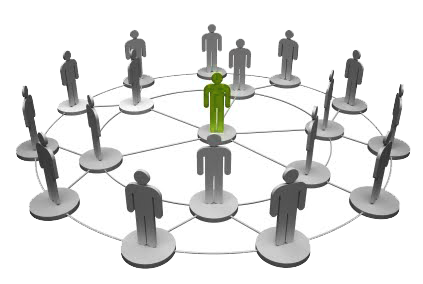 Our core belief is that leadership is a system. It meets the three criteria that Donella Meadows (and others) uses to identify a system:
Our core belief is that leadership is a system. It meets the three criteria that Donella Meadows (and others) uses to identify a system:
1. Critical elements (workforce, customers, and assets);
2. Observable interactions (relationships); and
3. A core function or purpose.
However, a leadership system is clearly not a circulatory system where elements interact based on chemistry. Nor is a leadership system a watch where the elements interact mechanistically. Nor is a leadership system a data system where critical elements interact based on the rules designed by software developers. A leadership system is a social system where the great “me” tends to be at the center.
Peter Stroh in his book Systems Thinking For Social Change: A Practical Guide to Solving Complex Problems, builds on Meadows definition by suggesting that a system is defined not by any function or purpose but a desired function or purpose (uses the word ‘outcome”). This is a critical development in understanding leadership as a system. As a system, leadership should be about the purpose or outcome that is… desired, or intended, or designed. It is also a social system because human beings are involved. While some compare human systems with a beehive (system) humans clearly operate in the world of free will, selfishness, learning, and a capacity for complex thought. Conversely, bees with a brain that is little larger than a pin head operate according to what has been encoded into their DNA with little capacity for learning and apparently need no leadership at all
In our research, we are seeing that organizations which identify an outcome or purpose of their leadership system, enjoy long-term growth and sustainability. For example, in 2000 the SSM Healthcare System won the national Baldridge Quality Award for health care. At the time they had 22,000 employees, 5000 physician/providers, acute care hospitals, nursing homes, outpatient facilities, and clinics. Their application suggest a strong of purpose or outcome … individual leaders are responsible for the communication and deployment of SSM’s mission and values. From here, SSM continued to grow and the CEO did not resign until 2014 when she retired.
The iconic Salvation Army has a similar outcome or purpose of their leadership system – execute on the mission which is preach the gospel of Jesus Christ and to meet human needs in His name without discrimination. The entire leadership system of the Salvation Army is to produce this mission.
In a drastically different kind of organization, the New York Mafia or Costra Nostra as it is sometimes called, has a clear and compelling purpose for its leadership system – protect the “family”. Members of the “family” put their own interests, even their own life as subordinate to the larger “family”. While the mafia certainly preyed like sharks on the public, it would be hard not to acknowledge their success. For over 70 years they dominated their competitors and become a shadow government raking in billions of dollars a year through multiple changes in senior leaders, while government authorities and even the FBI knew nothing of their existence.
